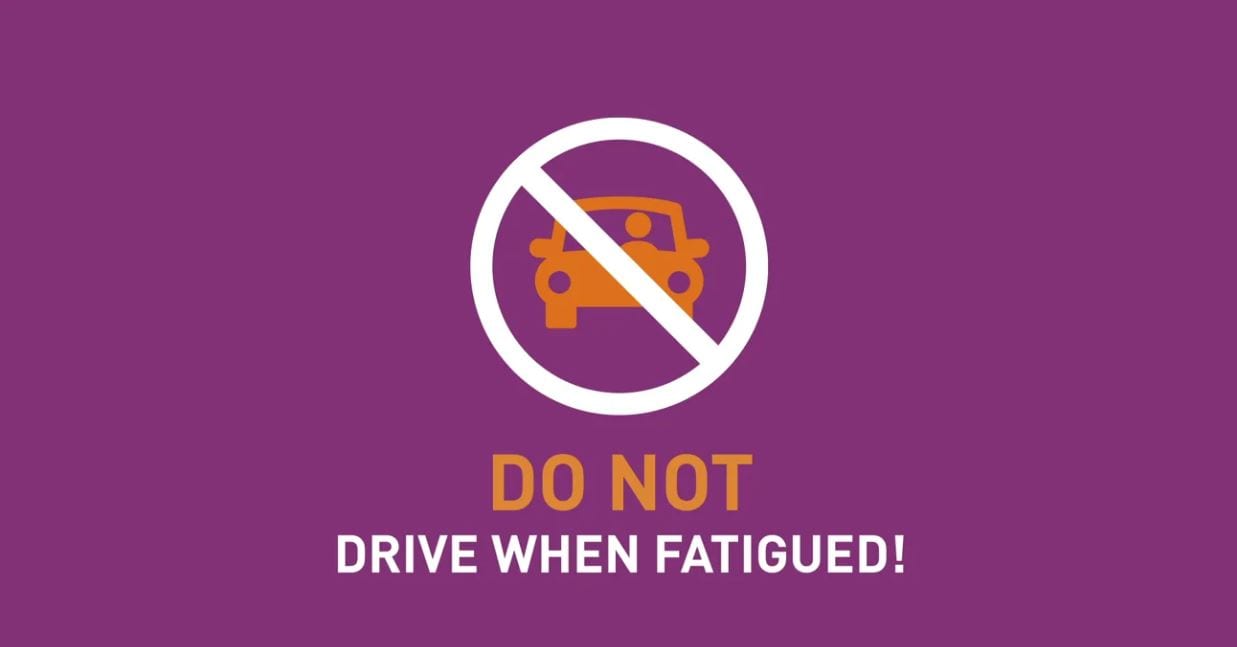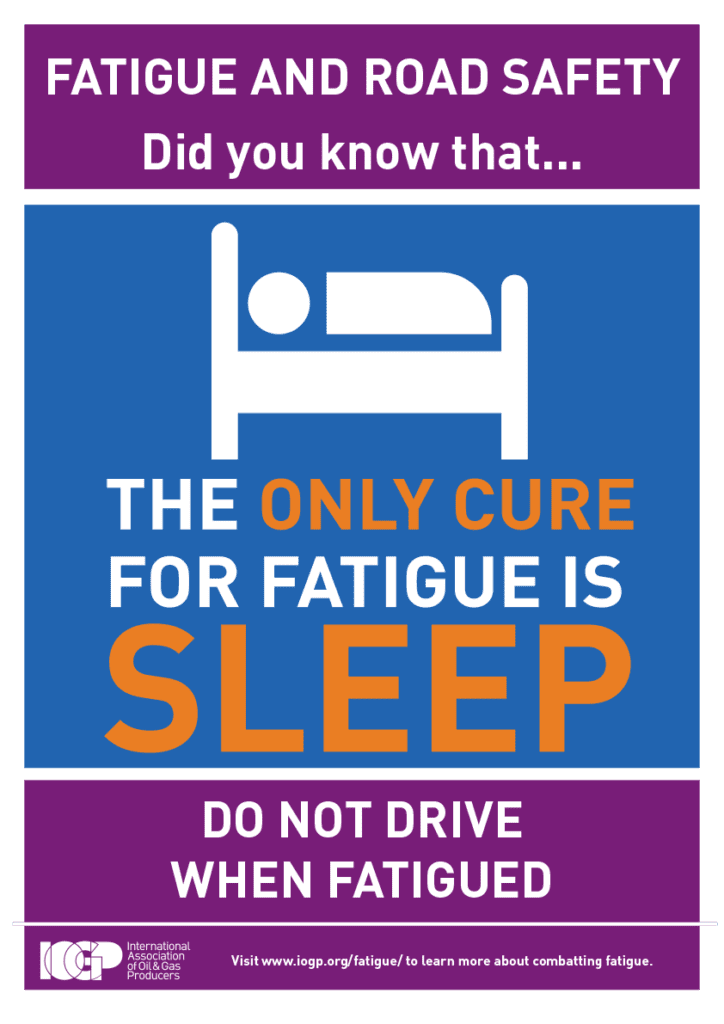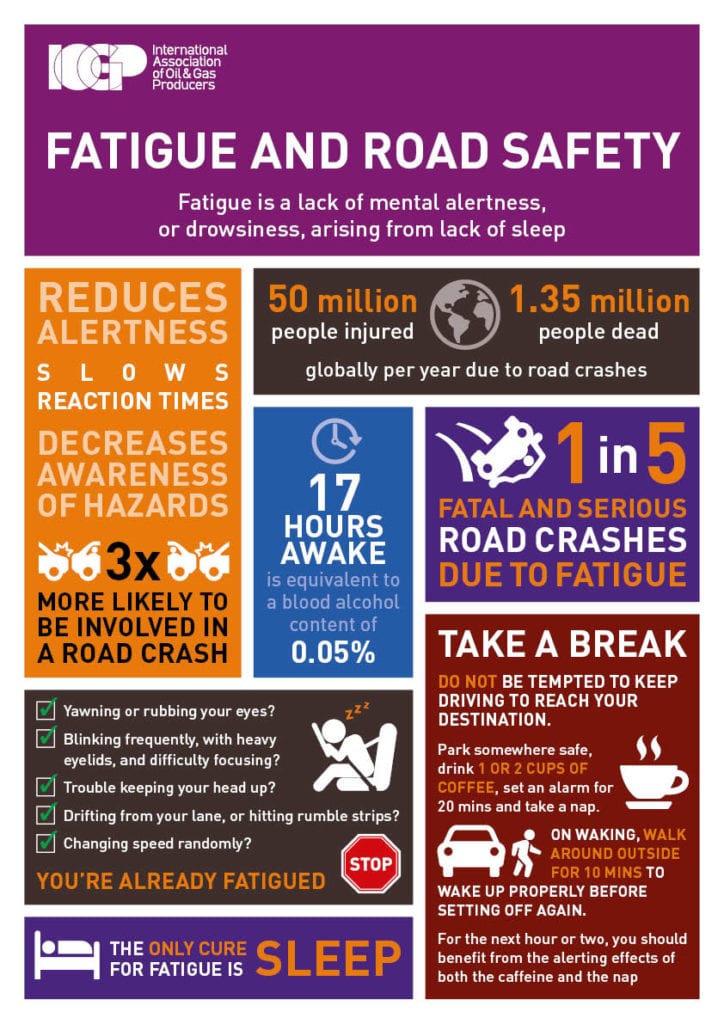
The Dangers of Driver Fatigue
Our campaign to raise awareness of the dangers of driving while tired
What is driver fatigue?
Driver fatigue is lack of mental alertness, or drowsiness, arising from a lack of sleep.
Understand the risks
Sleepiness contributes to approximately 1 in 5 fatal and serious road accidents.
When we are feeling sleepy, for example after a night shift, driving is one of the most dangerous things we can do.
Sleepiness reduces alertness, slows reaction times, and increases the likelihood of being involved in an accident.
Sleep-related vehicle accidents (SRVAs) are more likely to result in serious injury, because they tend to occur at high speed, and there is limited braking or avoidance action.
When?
SRVAs typically occur when our alertness is at its lowest
(between approximately 0200hr-0600hr). Research has shown that we are 50 times more likely to fall asleep at the wheel at 0200hr than at 1000hr.
Drivers are also at increased risk following inadequate sleep, or working long hours. With less than 5 hours of sleep, we are 3 times more likely to be involved in a SRVA. After being at work for 11 hours, the risk doubles.
Where?
Most likely on long, straight stretches of road, such as highways, which require minimum driver input, and where high-speed driving is permitted.
Who?
SRVAs typically involve those who work long hours, or are driving at times of the day when alertness is low, in particular truck drivers, high mileage drivers, young drivers and shift-workers. Other personal risk factors include suffering from sleep apnea, insomnia, and the use of some over-the-counter medications. Please contact your doctor if you are concerned that any of these factors may impact your ability to drive safely.
What can I do?
Plan
Plan
Plan: First, make sure you have had sufficient sleep before driving – most of us need 7 to 9 hours of sleep every day. If you are sleepy, do not drive until you have had some sleep, or take another form of transport. Make a mental plan for your journey, with planned breaks at least every 2 hours.
Assess
Assess
Be aware of the early warning signs of driver sleepiness: e.g., repeated yawning, changing position frequently, and frequent eye blinks. Do not wait until you are having difficulty keeping your eyes open or your head is nodding, or if you can’t remember a portion of your journey, as these are signs that you are already very fatigued, or are experiencing brief periods of sleep (microsleeps), and are not safe to drive.
Break
Break
Do not be tempted to keep driving to reach your destination: take breaks as planned, and take additional breaks if needed.
Opening the window or turning up the music are not effective ways to keep alert. As soon as you start to show signs of sleepiness, such as yawning, pull over and take a break.
Park
Park
Park somewhere safe, drink 1-2 cups of coffee, lock the doors, set an alarm for 20 minutes and take a nap. On waking, walk around outside for 10 minutes to wake up properly before setting off again.
For the next hour or two, you should benefit from the alerting effects of both the caffeine and the nap.
Raise awareness in your workplace
Posters
Download, print display these A3 posters in your workplace.
Infographics
Share on your social networks – LinkedIn, Twitter, Facebook, Pinterest …
What can companies do?
Show this 2-minute video during a safety moment, a toolbox box talk, or to start a discussion. Watch this video in multiple languages These videos are kindly provided by Total.
Reduce the amount of driving
Manage the risk of driver sleepiness
is an effective process for investigating the potential role of sleepiness in road accidentsEnable workers to manage the risk of driving when sleepy
Safety moments
This fatigue page is a work of the IOGP Land Transportation Subcommittee and the IOGP-IPIECA Health Committee






